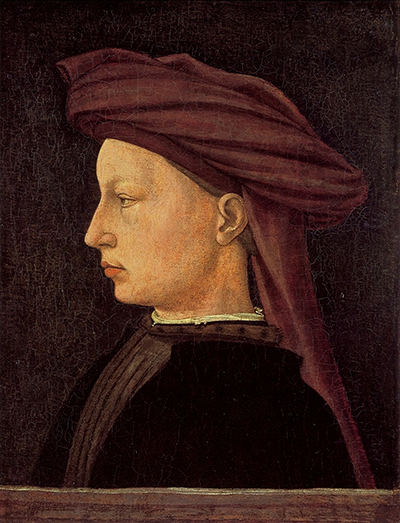The Portrait of a Young Woman by classic Renaissance artist Masaccio dates back to 1425 as a female portrait
The artwork is highly debated over the attribution of the painting, however based on its close relation to the artistÕs other artwork, Portrait of a Young Man, it has been stated that the artwork intact is by the artist.
The painting illustrates a female muse that Masaccio had painted in order to illustrate her feminine features. Much of Masaccio's art only showcases dramatic paintings with an array of action and depth. It was highly uncommon for the artist to paint portraits of facial studies of the human form as illustrated in Portrait of a Young Woman, and Portrait of a Young Man.
Both of these captivating paintings carry the same style throughout the artwork as the artist showcases their features from a side profile study. Art critics and historians are unaware of who the two muses are; however as believed to have been models while the artist depicted their features.
The artist tilts the womanÕs face sideways creating a side profile, while her body is slightly turned forward showcasing her form to the viewer. Masaccio had used a dabbing technique in order to illustrate the texture of the womanÕs skin in a neutral nude colour. The viewer is able to witness glimpses of a peachy orange shade near the side of the face and neck of the muse as the artist uses this deep colour to illustrate depth and contour within the woman's face.
With the neutral nude and peach orange, the artist creates a prominent contrast between the different ways the light falls upon the woman's face. Masaccio had decided to not overpower the womanÕs face by prominent features, yet instead to showcase the show female facial characteristics. The Roman woman is depicted with small lips that are softly plump in an orange shade. Alongside, her slim nose adds contrast to her face while her eyes remain tiny and engulfed in her sockets.
Masaccio had used a great deal of detail to showcase the ears of the woman as each fold and swirl is depicted accurately. It was not popular for Masaccio to go into a great depth of detail within his paintings, as they usually displayed the full bodies of his characters.
Masaccio rounded out the womanÕs face as he adds darker shades near her jaw to add depth to her face. Alongside, her temples are also darkened, contouring the outside of her face. The womanÕs eyebrows are depicted in a light blond shade, as if they are non-existent.
The woman is dressed in a deep brown coloured fabric that is accentuated by a charcoal black textile. Long brush strokes are used to illustrate the material near the collar of the artwork, alongside small mosaic details near the upper section of the attire. The artist displayed a brief white undershirt around the collar of the neck, adding light to the piece.
The artist intertwined the deep black shades of the textile with the dark burgundy colours displayed to illustrate the background of the painting. By using these similar colours, a sense of unity is achieved throughout the artwork as the colours blend with one another continuing the dark feel.
The headdress of the woman blends into the background of the painting, yet its soft burgundy colour is slightly accentuated adding a contrast. The woman's emotionless pose seizes the focal point of the painting as her deep stare startles viewers.




